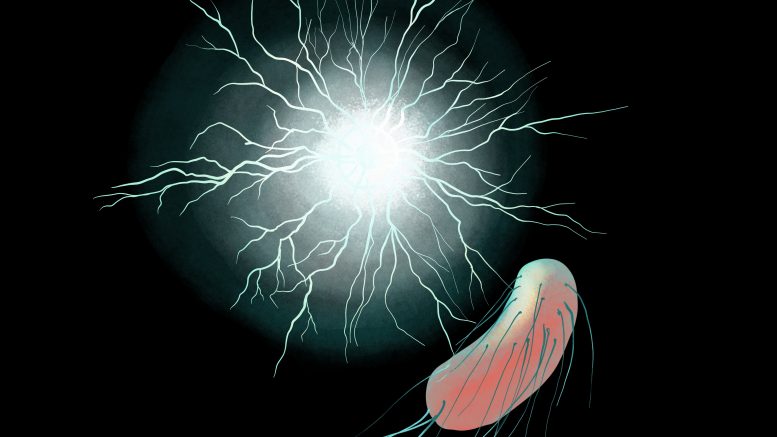Electrochemistry is a branch of chemistry that focuses on the chemical processes that make electrons move.
Electrons are negatively charged particles that exist outside of an atom’s nucleus. They create electricity when they move from one atom to another.
Electrochemical methods are often used in the treatment process of diabetes. For example, the glucose meter allows diabetics and their doctors to measure their blood sugar levels.
Sabine Kuss, an assistant professor in the U of M chemistry department, leads a research group in developing electrochemical sensors for medical applications. She said electrochemical methods have several unique benefits.
“It’s very quick,” she explained. “It’s fast, it offers rapid results, it is inexpensive and it can be applied to many, many areas of research and life.”
“When you look at electrochemistry around you, you see it everywhere.”
Some everyday examples of electrochemical technology include batteries, solar panels or electric cars.
One of the research projects Kuss’s team is working on aims to use electrochemistry to investigate antibiotic resistance.
A factor that aids antibiotic resistance involves bacterial efflux pumps — proteins in the plasma membranes of bacteria that stop and eject harmful agents from the cell. These pumps can allow cells to reject drugs such as antibiotics before they can take effect.
Electrochemical sensors can give further information about bacterial resistance methods, such as determining what level of resistance cells may have.
Since multiple cellular mechanisms contribute to antibiotic resistance, a bacteria’s degree of resistance is measured by its ability to expel or block the uptake of antibacterial medication.
Kuss’s team is able to investigate cells’ resistance abilities non-invasively using scanning electrochemical microscopy (SECM).
With this method, a scientist can observe which molecules move back and forth across the bacteria’s cell membrane. SECM does not disturb the cell, which allows it to be observed in its natural state.
SECM can also be used to see how cells react to certain stimuli, such as UV (ultraviolet) rays or new medications.
Kuss’s team is working on developing a biosensor that can tell a doctor which medication to use to best treat an infection.
A patient with an infection would give a blood or urine sample, and the sensors would be used to determine the best treatment path for the individual.
Antibiotic resistance is increasing from the misuse or overuse of antibiotics in plants, humans and animals.
Broad-spectrum antibiotics, which target multiple types of bacteria, are particularly prone to creating resistance when used unnecessarily.
Some research has shown that using broad-spectrum antibiotics can also cause adverse side effects that are not as prominent in patients who use narrow-spectrum antibiotics.
If doctors are able to determine which specific medication is most effective, it can reduce the need for antibiotics that target a large range of bacteria.
Another one of the ongoing research projects worked on by Kuss’s team seeks to understand reasons behind mitochondrial failure. It focuses on a childhood disorder called Cytochrome c Oxidase (COX) deficiency.
Children with this condition lack an important enzyme in their mitochondria. They often appear healthy for the first few days after birth but develop muscle issues later.
COX deficiency can cause problems in areas such as the brain, heart and digestive system.
If intervention is not quick enough, COX deficiency can cause long-term disabilities and even death. The relatively fast turnaround time for electrochemical sensors aids in early detection.
When this condition is detected early enough to provide preventative medication, symptoms of the disease can be minimized, allowing children with the disease to live relatively normal lives.
Kuss believes that the future of developing electrochemical sensors has great potential. She has been pleased to see how interested U of M chemistry students were in this field.
Kuss has six undergraduate students on her team, which she said has been a pleasant experience.
“I’m really impressed, I have to say, with the dedication and motivation of our undergraduate students,” Kuss said. “Every year, my group is hosting six or seven undergraduate students over the summer, and it’s just been amazing, amazing to work with such young students.”
“They have been super productive and have a very good understanding of these concepts,” she added.
“When I started here at the U of M, this was a very, very awesome surprise.”


